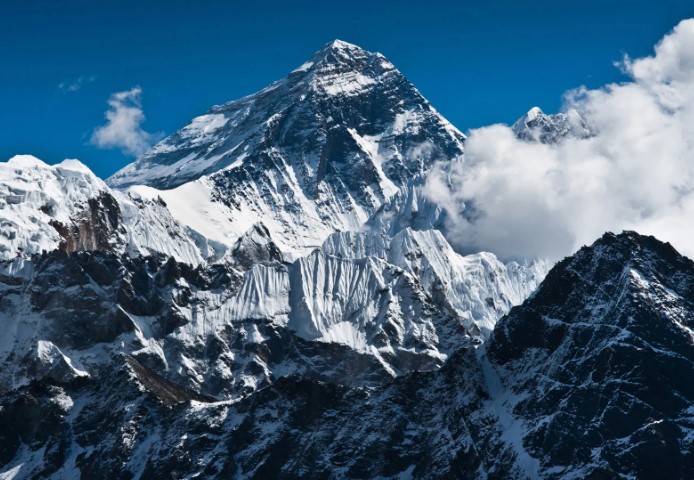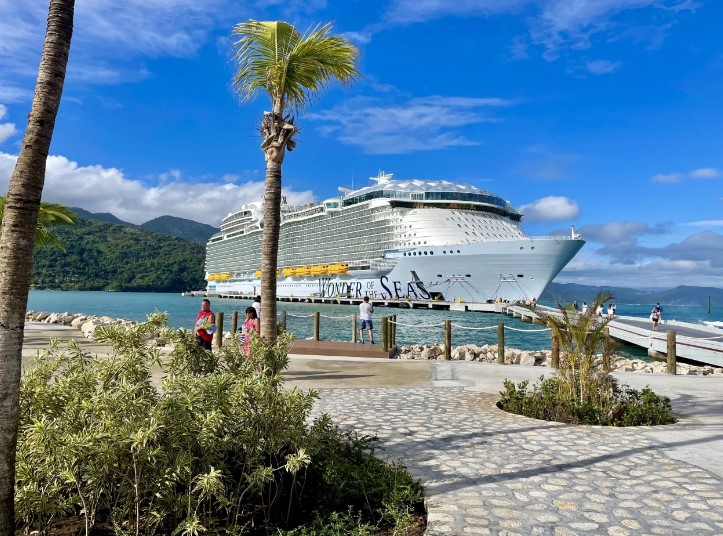
For the 25 years he has guided peaks in the Alaska Range, Bill Allen looked at snowy slopes on Denali, North America’s tallest peak, and saw a prize to be had.
“It’s the crown jewel of North America for not just mountaineering, but ski mountaineering,” said Allen, co-owner of and a guide for Mountain Trip, a Telluride-based company that leads clients up each of the highest points on each continent, including Denali, known as the Seven Summits.
But until May, Allen’s guides had been banned from taking ski mountaineering clients onto Denali. When the National Park Service implemented a permit system in Denali National Park decades ago and set rules for guiding services working there, Allen said, “ski mountaineering wasn’t a thing the way it is now.” Permit rules were written with the expectation that mountaineers would stay roped, walking uphill and down, and so required that safety measure. Breaking the rules could cost the company its spot as one of few authorized to guide in the park. So for years, individuals could ski from the summit, but anyone who hired a guide had to stay roped.
“You can’t ski safely down a mountain on a rope — it just doesn’t work that way,” said Chris Davenport, renowned ski mountaineer and former World Extreme Skiing Champion, who talked with Allen about the dream of guiding ski mountaineering trips in the national park for more than a decade. “It’s one thing to be on a rope when skinning up, but skiing down, it’s easy to yank someone off their feet.”

Allen argued the case for changing the rules to park rangers for more than a decade. In 2020, park management finally lifted the rope rule. In May, Mountain Trip guides led their first guided ski descent from Denali’s summit and then the second at the end of June for a group of developing ski mountaineers with a mission of skiing these peaks to talk about climate change.
“Now, we’re able to go and bring skiers there and see the beauty of the park from a skier’s perspective,” Davenport said.
Building a pathway in paperwork and pipeline for skiers
With interest in backcountry skiing and ski mountaineering exploding, particularly over the last two years, more people have built strong backcountry skiing skills, Allen said, and are looking to Alaska to take their adventures to the next level. That makes for both increasing appetite and a growing pool of potential clients with skills enough to attempt skiing on the 20,310-foot-tall peak (formerly Mount McKinley; its Athabaskan name was officially restored in 2015). That appetite helped motivate the park service to change its guidelines.
Fifteen years ago, Allen recalls, “The park was like, ‘Why do we need this, nobody is even asking for it?’ and I was like, well they’re not asking for it because it’s not an option, so we just say no to people every year — do you want us to have them call you? And we started doing that for a while,” Allen said.
For about five years, he handed out the email address and phone number for the park service to anyone who asked for a ski mountaineering guide on Denali, and the park service listened. Having Tucker Chenoweth, a skier, as south district ranger for Denali National Park, also helped.
“He gets it,” Allen said. Chenoweth couldn’t adjust the contracts that issue concessionaires their permits but could answer his bosses’ questions about whether guided ski descents were reasonable and what protocols to set. To answer those inquiries and nudge the bureaucratic workings along, Allen proposed guidelines for how to assess the terrain, avalanche hazards, where ski mountaineers should be roped, and where it’s appropriate to drop the rope based on test runs Mountain Trip staff made off the summit years ago.
“I have, on my own private trips, skied on Denali, and recognized that it could be done and that there was no real reason for the park service to prevent it,” Chenoweth said. “I think in a wilderness setting, you should have a choice on how you want to experience that place.”
Chenoweth is seeing more ski mountaineers on Denali, as well as more climbers on guided trips. Which is understandable. It’s challenging to camp at altitude for two-to-three weeks waiting for a weather window to reach the summit while making food and melting snow for water and dealing with sapping strength. Skiing adds another layer of difficulty.
“I’d say skiing on Denali is survival,” Chenoweth said. “There’s places and times that it lines up and you have decent snow, but in general, you’re going to be really battling the conditions. You’re going from 7,000 feet to 20,310 feet and so you get the whole gambit of conditions. It’s everything from breakable crust to wind slab to corn to powder, all the way up to super hard alpine ice. It sounds fun, so I think there will be interest, but the reality of committing to it and doing it is going to be different, because it should not be taken lightly.”
Ski mountaineering on Denali requires all the skills of a mountaineer for glacier travel, crevasse rescue, climbing 50-plus degree slopes covered in snow and ice with crampons and ice axes, and self-arresting to prevent long falls.
“All these things, as well as dealing with the altitude and the environment of Denali,” Allen said. “Then, you also need to be a really strong and proficient skier that can handle skiing with a heavy pack on in, like, not perfect snow conditions, in potentially some steep terrain. … There’s a lot of people who have interest and fewer people who have the skills.”
But the shift in regulations also allowed for launching a program to develop those skills. With Davenport, Mountain Trip began week-long ski mountaineering camps in the national park. The first series of those camps were held in 2021 and the second ran in April.

“This is exactly what I, personally, from a selfish perspective, want to be doing. I want to be flying into Denali National Park with an awesome camp set-up and doing steep skiing with my clients,” Davenport said. “When you get to the bottom of a steep, long ramp or run or couloir and they turn and look at you and say, ‘That’s the most incredible thing I’ve ever skied,’ that’s where we set the bar for this program.”
For Davenport, trips to the Alaska Range in the mid-2000s illuminated the ski mountaineering potential not just on Denali and the Messner Couloir – which he included in his book, 50 Classic Ski Descents of North America – but throughout the national park. The best skiing isn’t up high, where temperatures drop too low for snow to fall most of the year, Davenport said, but on the lower slopes. That’s exactly where they’ve aimed those ski mountaineering camps, which skip the hassle of hauling gear in on sleds by flying in supplies to build a base camp on a glacier at around 6,000 feet. Guides also use the lower flanks of the mountain to teach critical mountaineering techniques when rough weather blows in and it’s too dangerous for a lengthy tour that can climb 3,000 vertical feet.
The ski camps have been busy enough to fill the narrow three-week window in April for prime skiing conditions in the Alaska Range. So far, demand hasn’t been huge for ski descents of Denali, with just two small trips booked this year. One trip went with one skier, and the other hosted three, compared to the standard group size of six. That’s expected as Mountain Trip builds the first-of-its-kind ski mountaineering program.
“It’s the kind of thing that I think takes people years to sort of build up to,” Allen said. The guide service also leads backcountry skiing and climbing excursions around Colorado. “So, we have people who are coming and skiing with us in Colorado, doing some training there, then coming to Alaska for the week-long ski mountaineering camp next year. It’s going to take people a couple of years, I think, to build up the skills and comfort level.”
For skiing Denali, the itinerary mirrors a mountaineering trip: Move to camp one, start carrying loads up to camp two at around 11,000 feet in elevation, then spend about three nights there before moving on to camp three, at 14,000 feet, the big basin where teams spend most of the time. Both camps sit amid skiable slopes, and the ski mountaineering trip in May stayed extra days at that 14,000-foot camp just to ski a few more lines, acclimatizing while skinning up to about 17,000 feet, then skiing back to camp.
Completing the West Buttress Route, the standard route up Denali, includes skinning up some low-angle glaciers, roped to avoid the worst consequences of crevasse falls. Higher up, where the terrain becomes steeper, the snow deeper, and the crevasses fewer, they evaluate slope, avalanche risk, and fall hazards.
“We’re not ditching the ropes entirely,” Allen said. “But we have the ability now to decide, OK, we can take the rope off.”
Much of the summit push can be done on skis, with sections that require shouldering skis. Ski descents start from close to the top, though wind and variable snow can push the starting point further down the peak. This season, an unguided ski mountaineer was injured and the rescue effort required a helicopter, Allen said, but generally, the skiing itself is fairly straightforward.
“It’s not extremely steep, but steep enough it can be super fun,” he said. “In some ways, it makes the mountain feel so much smaller because everything gets closer and you can move fast through terrain — sometimes, but not always. It changes the dynamic in a lot of ways. If you can get down safely and it’s good snow conditions, that’s the dream, for sure. But just being able to get down that terrain is a big win.”

“The Last Ride” film looks to guide service for high-altitude support
On Tanzania’s Mount Kilimanjaro, Edward Salisbury and Will Tucker stood on the last shred of an icefield, the finger of snow and ice dropping off around them, pink in the low sunlight. Their figures were dwarfed by the thickness of the ice below them. In recent lifetimes, deep snow and ice blanketed the mountain, but climate change melted glaciers on Africa’s tallest mountain down to the last fringes.
The two had traveled to Kilimanjaro in April as part of a film project to ski the Seven Summits and document how climate change is transforming the world’s highest peaks. They knew the project would sometimes require walking over more bare rock than sliding down snow. They’ve titled their forthcoming film for what they expect this project might be: “The Last Ride.” Some, like Kilimanjaro and Puncak Jaya (or Carstensz Pyramid) on the island of New Guinea, the peak they intend to reach this fall, are already barely skiable.
Tucker and Salisbury are just enthusiastic skiers who became aware of the changing winter landscape and wanted to do something about it, they explained in an interview via video conference from their hotel room in Anchorage in mid-June. The next day, the two, along with Jon Moy, director and cinematographer for the film, would drive three hours to Talkeetna, Alaska, then fly to the Kahiltna Glacier to spend three weeks in Denali National Park, looking for a good weather window to ski Denali. On June 28, they became the second Mountain Trip-led team to ski from the summit this year.
“A core part of the project is working out how to channel personal passions into this kind of climate crisis messaging,” Moy said. “Part of the challenge with what we’re doing is, skiing — and particularly high-altitude mountaineering — is a very small, niche, privileged little market. But what we’re trying to do is present that to as wide a possible audience as we can. It’s less about the mountaineering, but more so about working out what you love and finding a way to use that for good.”

As former ski racers and freeride and freestyle competitors, Tucker and Salisbury were confident in their skiing skills. An interest in paragliding gave them experience ascending to and running off of technical terrain in Europe. But between the altitude — until Russia’s Mount Elbrus last year, none of them had been above 5,000 meters in elevation, and many of these summits press toward 8,000 meters in height — and needing someone to partner with Moy while he skied away from the others to film, they decided to hire a guide service. Mountain Trip’s Allen was, Will said, “basically the only guy crazy enough to say yes.”
They plan to offset the 58 tons of carbon dioxide emissions they estimate their travel, camera gear, and other equipment will produce seven times over. By exploring each of the offsets they purchase in the film, they expect to illustrate different efforts to mitigate climate change’s worst effects. Options covered could include planting trees, capturing methane at landfills, or carbon capture operations that use fans to pull carbon dioxide from the air before and storing it deep underground.
“We’re not saying to people, lock yourself up in a room and never burn carbon — it’s impossible,” Salisbury said. “We want people to get outside. The more people can spend outside, and in these areas, the more they’ll connect to them and the more they’ll want to save for themselves. … So how can you be outside and see those places responsibly?”
After they ski the last peaks in their line-up in Antarctica and South America in 2024, the film will blend in insights from locals who face severe losses as the planet warms. Working with guiding companies helps connect with those communities and build a deeper familiarity with these mountains. On Denali, the two aim to interview guides and pilots about how they’ve seen Alaska’s glaciers change, the future of Denali mountaineering and an Inupiak tribal member whose village needs to relocate to escape rising sea levels.
“Global warming, I think, is the biggest concern we have for Denali,” Allen said. “It’s warming up, and it’s going to start falling apart in the next few decades.”
Already, a bathtub ring has formed on the mountains that marks where glaciers have retreated. A ridge between 16,000 and 17,000 feet in elevation that used to be snow-covered has melted down to scree. Even after Alaska received record snowfall this winter setting up expectations for deep snowpack on the lower glacier, Allen said that’s not what he found this spring.
“It seemed like being there in May, when I went in, it looked like June conditions,” Allen said, “That’s, whatever, one little observation, but things are warming up in the Alaska Range.”
Still, Denali remains a big, snowy, arctic mountain where skiing isn’t immediately threatened, Allen said.
“It’s going to take a long time for the snow to melt out of there,” he added, “but it has changed.”
Balancing risk and reward on an already in-demand peak
As an ice-climber at heart, Ouray-based mountain guide Elías de Andrés-Martos won’t be guiding ski descents, but he calls them a great addition as a chance to diversify guiding at Denali and allow more people to “find their niche.” He’s mountaineered for 25 years and guided for more than 15 of them in the Alaska Range, Alps, Andes, and Himalaya, among others. He’s in his third season of working with Mountain Trip in Alaska.
We caught up over breakfast before heading out to explore Ouray’s 3-year-old via ferrata, the “iron way” of ladder rungs and cables used to traverse the Uncompahgre River canyon. For de Andrés-Martos, the “fun” outing fits in between sleeping in a hypoxic tent, running up Mount Sneffels six of the eight previous days, and living out of a duffel bag packed for the moment a weather window opened on his next goal, the Cassin Ridge on Mount Denali.
The prized alpine route has not successfully been guided in decades, de Andrés-Martos told me as we hiked uphill toward the via ferrata. Denali’s annual mountaineering summaries date the last successful guided trip up the Cassin to 1991. While 943 climbers attempted Denali from the West Buttress last year, just 16 tried the Cassin.
He was confident his two clients, who have trained and climbed with him for a decade, had the fitness and skills to complete the route. Then, at lunch, he heard from one of those clients who had gone to base camp for a West Buttress expedition to acclimatize. Cold had injured his index finger. He’s out, de Andrés-Martos said. Further cold exposure could cost him the finger.

Like backcountry skiing and ski mountaineering, interest in mountaineering seems to have grown, if on a different scale. Take Mount Everest, which saw 100 climbers on the summit in a single day in May. Climbers are also enjoying a success rate, with the number of successful summits on Everest doubling over the last 30 years . On Denali this year, the share of summit attempts that succeeded bumped as high as 71{0b5b04b8d3ad800b67772b3dcc20e35ebfd293e6e83c1a657928cfb52b561f97}. Allen credits good weather, with a high-pressure system sitting over Alaska yielding strings of sunny days that let all 10 Mountain Trip teams summit.
“How the sport is evolving is making it more accessible, so we have more people,” de Andrés-Martos said. “In the terrain that’s known — because we haven’t found everything — in the terrain that’s known and what most of the mortals have access to, what are the challenges going to be? They need to be created. … You come up with your ‘first’ and continue to do what’s already been done.”
Ski descents have pushed that line forward, he added, if they sometimes require more jump turns and survival skiing rather than the swooping downhill familiar to skiers at resorts. The undertaking isn’t new, with Bill Briggs skiing Wyoming’s Grand Teton in 1971. Mugs Stump’s stunning solo ascent of Denali in 1991 involved skiing and down climbing the West Rib Route. And Andreas Fransson skied Denali’s rugged South Face in 2011, which that year’s annual mountaineering report on the peak called “a fantastic statement of one person’s courage to challenge himself in the mountains.”
And yet, space remains for new achievements. French mountain guide Paul Bonhomme spent last year skiing 10 new lines in the Alps. The year of Fransson’s ski descent of Denali, the mountaineering summary report mentioned Denali consistently sees about 1,000 climbers each year — it still does and has since the early 1990s — but climbers often find variety by pursuing new lines or with “different, notable strategies.”
“Mountain Trip actually are the pioneers in guiding ski trips in Denali. It’s its own thing,” de Andrés-Martos said. “Ski guiding has another array of risks, but also has another array of benefits. You get down the mountain now faster. Somebody’s developing a cold injury, just get them down quick. Fatigue, you cover ground much faster. Could be dangerous going up, but it’s really beneficial on the way down.”
Skiing can also be dangerous on the way down, he added later, because skiers move faster through crevasse-laced terrain, and might come upon them too quickly to avoid them. Plus, ski boots are colder. That said, skis distribute weight over a fragile crust of snow, potentially keeping that person aloft where boots and crampons might punch through. Or, skis could catch someone’s fall before they drop into a crevasse. On acclimatization trips, hauling gear uphill to practice breathing at altitude, ski mountaineers can cache gear at a high camp and be back at base camp in half an hour. For a hiker, that return trip can take four hours.
“Those people are going to be more ready to kick ass when it’s time to on summit day,” he says. “But you need to have the guides for it.”
Any of the five guiding services permitted to lead in Denali could now offer ski descents from the summit. So far, Alaska Mountaineering School seems to be the only other guiding company to take that opportunity. In a system where Denali National Park allocates a limited number of permits each year and those offerings are already well-booked, for a lot of guiding services, there’s little incentive to take on more hassle.
“We’re happy with mountaineering, which took long enough to get under control as it is,” said Gordon Janow, director of programs for Alpine Ascents, another guiding service that works in Denali National Park. This year, they’re taking close to 100 people to Denali — and turned away 50. Skiing is “probably not something that we would add, because we’re in good shape,” he said, “but I think it’s viable for the right group of people.”
But, in a crisis, when guides and rangers collaborate on rescues or otherwise support one another through situations in which someone can’t continue, he hopes skiers might become an asset to everyone, using their ability to quickly descend to help move gear as needed. At a minimum, Allen added, guides can model best practices and perhaps improve safety among other groups.
Mountain Trip has also filled every space on its trips in recent years, he said, and “We didn’t need skiing to make that happen.”
“It’s definitely more of a passion project,” Allen said. “It’s a ski mountaineering mountain. It’s so well suited to ski mountaineering, it would be a shame if we weren’t offering that.”
This story first appeared in The Outsider, the premium outdoor newsletter by Jason Blevins. >> Subscribe








More Stories
This Phone Crossbody Is Perfect for Travel
Complete Guide To Croatia’s Medieval Seaside City
Universally Flattering Swimsuits I Always Pack